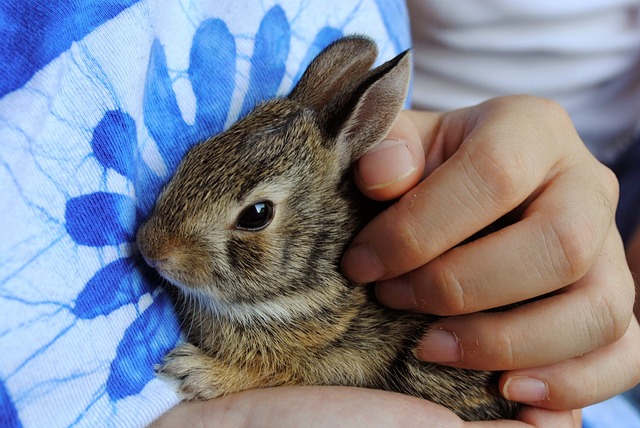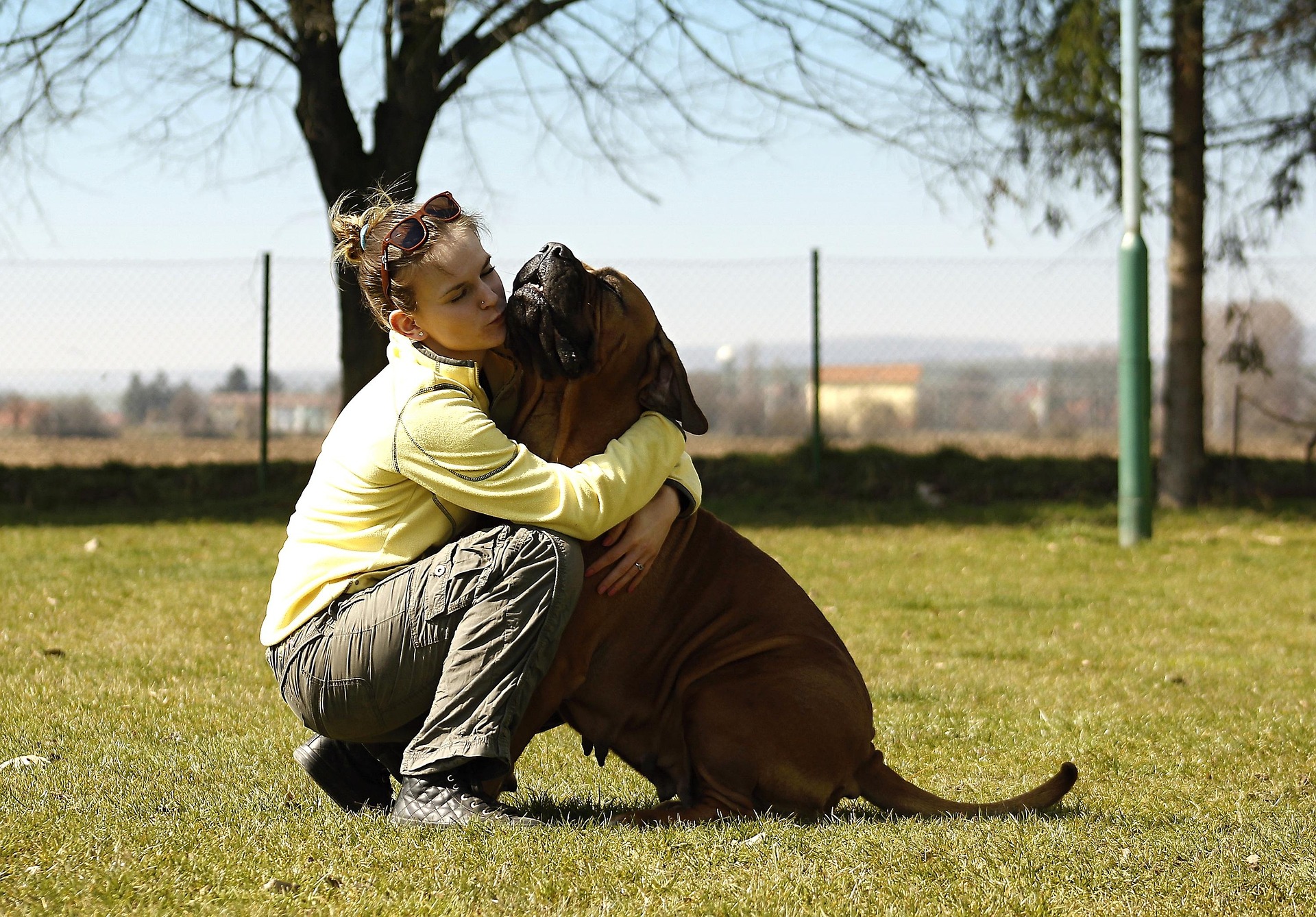Are you planning to adopt a pet bunny, or have become a new rabbit owner recently? If so, congratulations! Now is a great time to learn basic rabbit care 101. That way you can provide a healthy environment that will keep your new pet happy.
There are lots of reasons for choosing a bunny as a pet. The following information will help you be a good pet parent for your brand new family member.
Why a Rabbit Makes a Good Pet
If you want a charming pet who will show you love and affection and will fit into a small household without requiring the attention a puppy needs or the space a kitty wants, a rabbit can be the perfect pet for your household.
- Rabbits are very, very quiet, which is a big bonus if you live in an apartment or a peaceful neighborhood. There will be no barking when something or someone passes by outside or when left alone, and there will be no whining at the door when you leave the house.
- Like cats and dogs, rabbits form deep bonds with their owners, recognize them on sight and by voice, will come when called, and tend to follow their parents around.
- Rabbits can be housed in small spaces and are low maintenance compared to dogs. They don’t have to be walked, they require little grooming, and they can be litter box trained quite easily.
- Rabbits are very cute and cuddly and they can be taught tricks too, like jumping through hoops or running through mazes.
- Unlike most small animals (e.g. hamsters or guinea pigs), rabbits usually live eight to ten years or more, especially if raised indoors.
- You can select the perfect rabbit from more than 50 breeds in a variety of colours and with distinctive personalities.
Why a Rabbit May Not be the Right Pet for You
There are particular considerations to make when choosing a rabbit as a pet. You might not be in the best situation to welcome this little animal into your household if any of the following applies:
- For people who live in very small homes and have no yard, it might be difficult to bunny-proof a house for the times when your little pet needs freedom to exercise by running around outside a cage or hutch for two or more hours each day.
- If there are small children in the home, it won’t be a safe place for a fragile pet who needs to be picked up and held very carefully. Rabbits can be injured easily, especially when being handled by children too young to understand how delicate little bunnies can be.
- Although you can easily find rabbits in shelters and they are not expensive to acquire, you need money to buy a suitable cage or hutch, litter, appropriate food, and an annual checkup by a rabbit vet.
- It is important to ensure there is a qualified veterinarian in your area who knows how to treat a rabbit, especially if your bunny becomes sick or is injured.
- Rabbits are social animals and you need to have time available to play with your bunny. If you move frequently or travel a lot, please understand that rabbits hate travelling and tend to be very nervous in new environments.
Basic Rabbit Care 101
1. The First Important Decisions
Once you have decided a rabbit will be a great pet for you or your family, choose your pet carefully, decide if your rabbit should be an indoor or outdoor pet, and if indoors, caged or allowed to roam at will or with restrictions.
Spend time with the bunnies you like best before making a final decision on which one to take home with you. Just like dogs and cats, some rabbits are very playful and outgoing, others are shy and more conservative. You should select one with a personality that suits you and your household the best.
Because rabbits are extremely social creatures, you should consider buying a pair of rabbits so that they can keep each other company. Handling your rabbit gently and often can help avoid aggression.
If you have a yard and live in a very mild climate, you may consider housing your pet outdoors. However, domestic rabbits are not like wild rabbits and can’t survive in extreme hot or cold temperatures. Even if the climate is fine, the sight or sound of a wild animal nearby—even if your rabbit is caged and out of harm’s way—can cause so much stress to a little bunny.
If you plan to house your rabbit indoors—this is a preferred, healthier, and safer choice—you have to decide how much freedom your bunny can have. If it’s allowed to roam at will or is restricted to certain rooms when out of the cage (i.e. for most of, or part of, or a few hours of each day), you have to bunny-proof all areas in the home that your bunny can reach. Rabbits love to chew and will munch on anything like electrical cords, toxic cleaning products, and various plants. Keep your bunny safe by removing these hazards!
2. Purchase a Cage or Hutch and Other Necessities
A cage or hutch should be five times the length your rabbit will be when it’s fully grown and high enough for your bunny to stand up on its hind legs without bumping his or her head. The average size is about 12 square feet (1.1 square meters) plus another larger area or a room for exercise. If the bottom of the cage is made of wire, place layers of cardboard or other materials that will protect your bunny’s feet; they are not covered with pads like those of cats and dogs.
There must be room in the hutch for a litter box, which should contain organic litter (not kitty litter) made of paper, wood pulp, or citrus, plus a little hay for your bunny to snack on when they use the box. Boxes should be placed in the corners of a room; they prefer to use the litter box in these areas.
Make sure there is enough room for a sippy cup or a bowl of water in the cage. The water should be changed at least once a day. Include some items for your rabbit to chew on, such as blocks, rings, or balls of untreated willow wood, and cardboard paper towel rolls, or toilet paper rolls.
Have some of these items outside the cage as well to keep your bunny occupied when they’re roaming the house or exercise area. That way the edges of carpets or loose, enticing, chewable household objects are less attractive to your ever-munching pet. Bunnies also like to hide, so you can supply a little box with an opening that your pet can go inside and be alone.
3. Provide a Balanced Diet
Hay is the main diet staple for rabbits, and a body-sized amount of grass hay (e.g., timothy grass, orchard grass, oat hay, or brome) is the right amount. There should be a constant supply as it ensures protection of your bunny’s digestive system.
Fresh vegetables, primarily leafy and dark green ones (e.g. leaf lettuces, arugula, dandelion greens, and parsley) are best and you can supply a head-sized amount each day. Alfalfa-based pellets can be used as a supplement (not a substitute) to the leafy greens, and should be given only in small quantities, such as a small handful a day.
Fruits and treats are great when training your rabbit (to come when you call them, etc.) and just for fun, but use sparingly starting with a teaspoonful and only one at a time. Carrots, in spite of what you have seen in Bugs Bunny cartoons, fall into the category of treats, along with fresh blueberries, strawberries, pears, peaches, plums, papayas, and melons.
Avoid giving your rabbit iceberg lettuce, tomatoes, corn, beans, peas, potatoes, beets, onions, nuts, seeds, crackers, bread, and cereal. Don’t offer them candy, chocolate, or food for humans in general either.
4. Be Careful Lifting and Holding Your Rabbit
Avoid inflicting severe injuries on your new pet by remembering these “don’ts”: Don’t pick up a rabbit by the ears. Don’t carry one by the scruff of the neck without supporting the hind end. Don’t try to restrain rabbits on either slippery or hard surfaces or by pushing down on the animal.
A towel can be used to help restrain a rabbit safely. Remember to lift your bunny gently with the hind end always supported. For moving an aggressive rabbit, lift them by the scruff of the neck and support the rump while positioning the hind legs away from you to avoid being scratched or kicked.
For docile rabbits, lift them in the same fashion but hold the rabbit close to you and support the hind end with your elbow while placing your fingers under the front legs. Another lifting method for docile and shy rabbits is to place the head of your rabbit in the crook of your elbow, and support its weight and hind end with your arm while placing your other hand to hold or pet your rabbit over the back of the neck.
If a rabbit is the right pet for you and your household, following these simple rules in rabbit care 101 will supply you with the basic knowledge of how to care for these delightful, loving, little animals.
Creative Commons Attribution: Permission is granted to repost this article in its entirety with credit to Hastings Veterinary Hospital and a clickable link back to this page.






